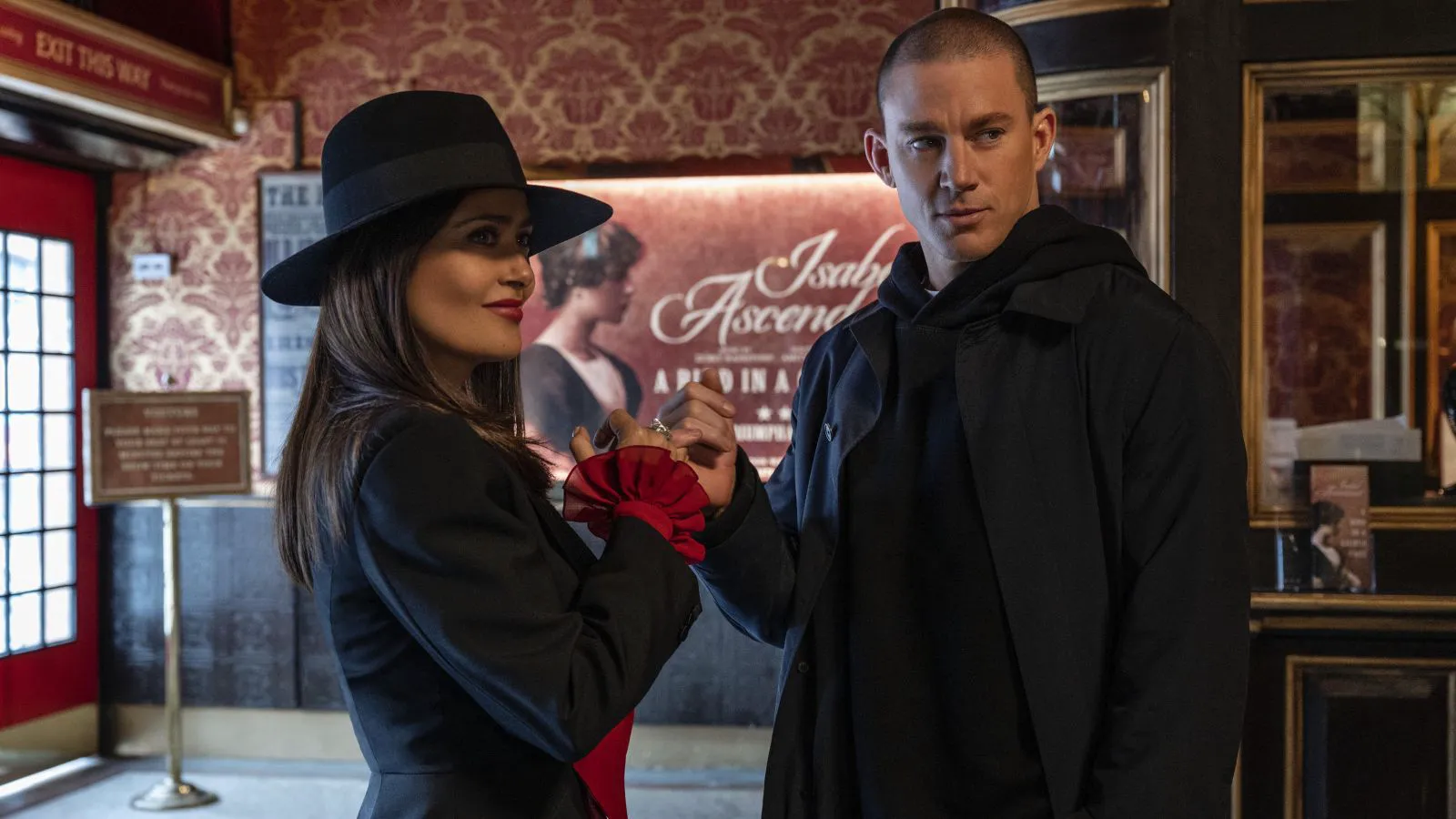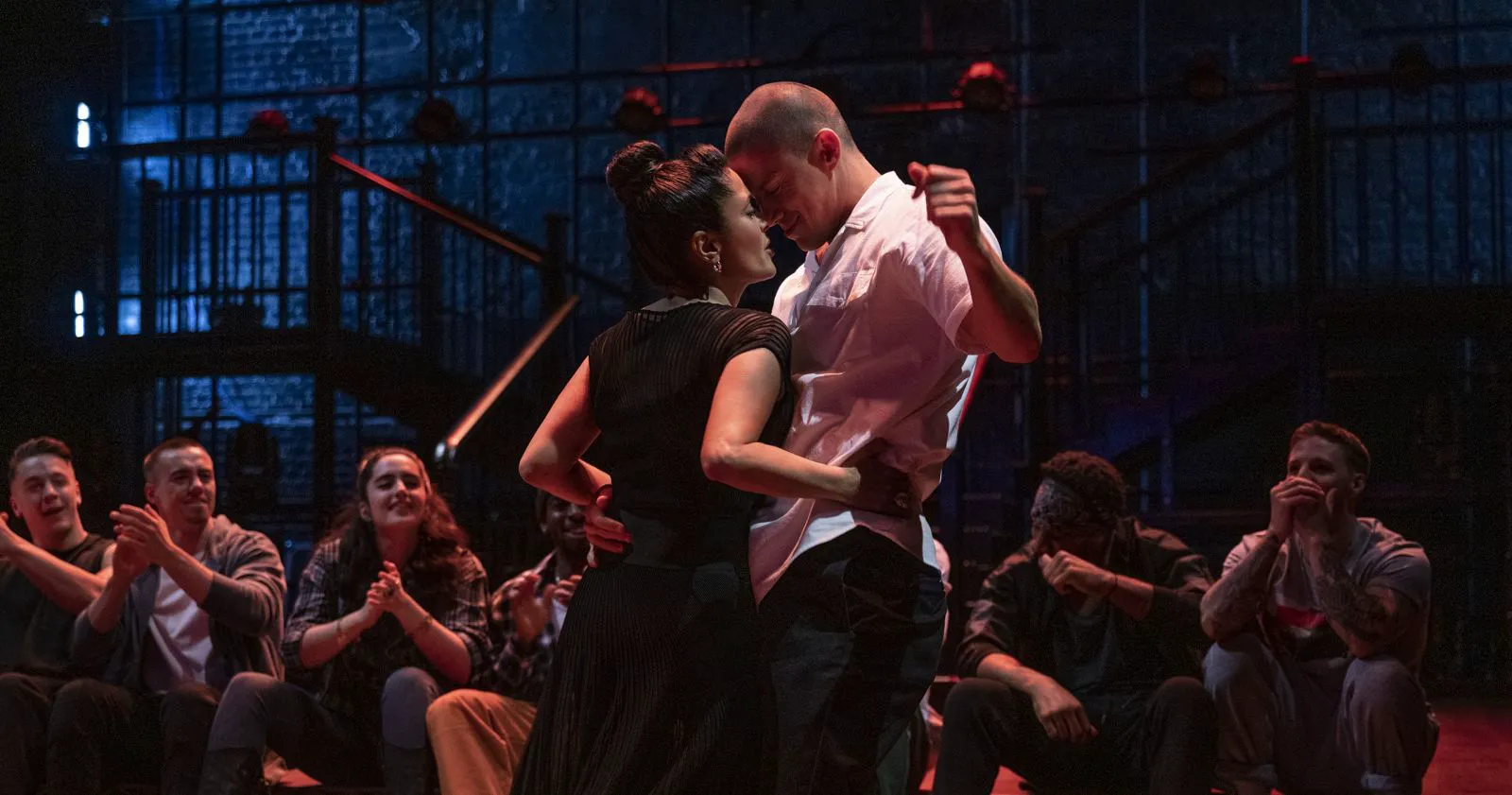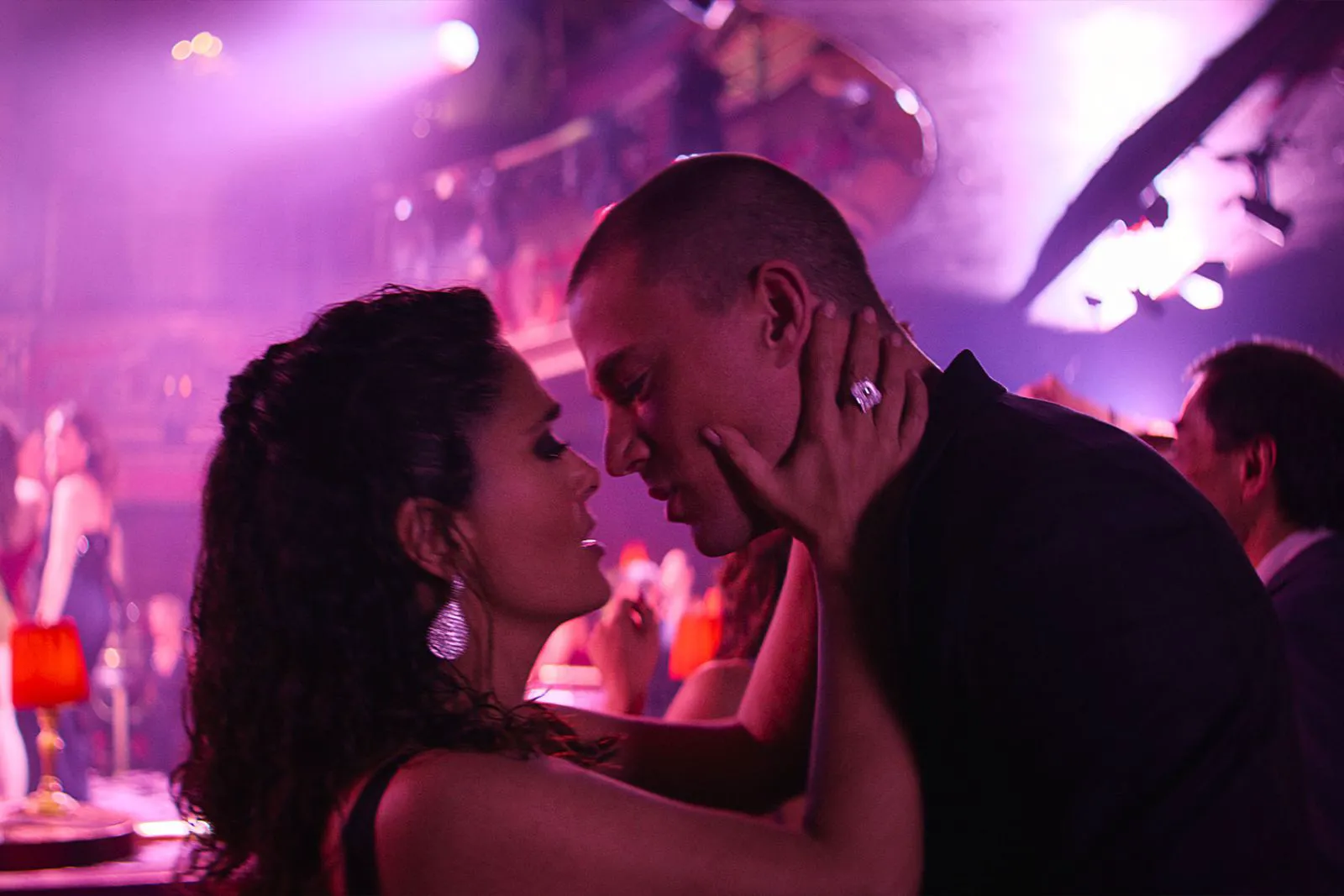From Stripper to Stage Director: A Look at “Magic Mike’s Last Dance”
Mike Lane (Channing Tatum), the former stripper, finds himself bartending after his furniture business succumbs to the COVID pandemic. A chance encounter at a charity gala leads him to the wealthy Maxandra (Salma Hayek). Intrigued by his past, she offers him a tempting proposition: one last dance, just for her. He accepts, and the spark ignites, leading to a whirlwind of events that land Mike in London. There, Maxandra appoints him as the director of a prestigious theater, formerly owned by her estranged husband. Her goal? To give her soon-to-be ex a spectacular middle finger while simultaneously gifting the women of London a show they’ll never forget.

Channing Tatum as Mike in “Magic Mike’s Last Dance”
Coming eight years after its predecessor, “Magic Mike’s Last Dance” feels somewhat unnecessary. The original films presented an interesting dichotomy. The first was a gritty drama about the pitfalls of the American dream and the exploitative nature of the entertainment industry. The second, “Magic Mike XXL,” was a surprisingly feel-good movie about finding joy and self-worth in bringing pleasure to others. These films, while tonally different, offered a balanced perspective on creativity and the role of art in people’s lives.
A Shift in Tone
“Last Dance” rewinds Mike’s journey, finding him jobless and reluctantly returning to erotic dance, this time as a choreographer. The original crew makes a cameo via Zoom, and the road-trip structure of “XXL” is replaced by a heavier melodrama. This tonal shift feels awkward, especially after the simple pleasures of “XXL.” We see Mike grappling with messy divorces, troublesome children, and the existential crisis of a man who expresses himself best through movement.

Channing Tatum as Mike in “Magic Mike’s Last Dance”
The film attempts to show Mike’s evolution: from employee to mentor to artistic director with creative freedom. However, this freedom seems to weigh him down. He struggles to articulate his vision, passively agreeing to ideas, even the absurd ones. It’s as if he’s merely a puppet of others’ desires. This raises an interesting point: creative freedom doesn’t always equate to freedom of expression. But the film doesn’t fully explore this, as Mike eventually transforms into a passionate auteur, determined to deliver the show despite obstacles.
The “Last Dance” Itself

Salma Hayek as Maxandra in “Magic Mike’s Last Dance”
Perhaps the biggest disappointment is the titular “last dance,” which pales in comparison to the electrifying finale of “Magic Mike XXL.” What was once a spontaneous burst of sexual energy is now a merely pleasant dance, lacking individuality and drive. Mike’s attempt to express his feelings for Maxandra through the performance feels derivative.
Soderbergh’s Touch
Despite its flaws, “Last Dance” showcases Steven Soderbergh’s ability to capture the zeitgeist. The film subtly reflects the disorientation of a world grappling with the pandemic, forced to connect through screens and rediscover themselves. Just as the first “Magic Mike” reflected Soderbergh’s frustration with the Hollywood system, and “XXL” conveyed a renewed love for filmmaking, “Last Dance” embodies a sense of uncertainty. The film seems unsure of its direction, mirroring the collective confusion of the present moment. Ultimately, it arrives at a simple conclusion: when in doubt, choose love.